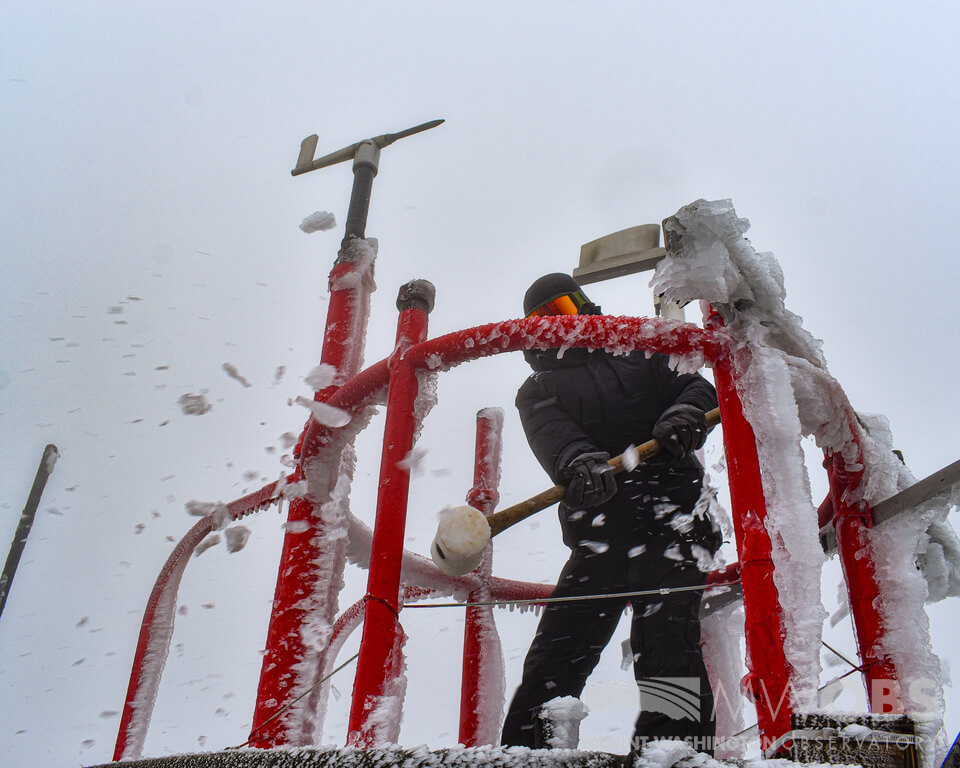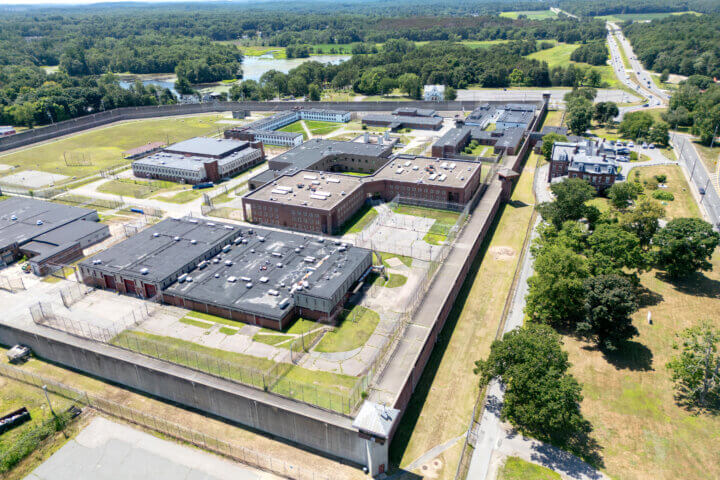At 5:30 a.m., a lot of people are either still asleep or just beginning to wake up.
Not Charlie Peachey.
He’s already at work, de-icing the observation tower atop Mount Washington. He’ll sometimes have to get up earlier: He’s the one who is called when an instrument goes down — which means he’ll have to be out there at 3:30 a.m. in the bitter cold. Once, when an instrument went down, Peachey braved freezing 80 mph winds to make sure it got repaired.
“It’s a very cool experience,” he said. “It’s definitely a very unique job.”
Peachey, a 2018 Concord-Carlisle High School graduate, works as both a research and IT specialist and a member of the weather observation team at the summit of New Hampshire’s Mount Washington, which is known for its extreme weather.
Not a lot of people might take a job like his. But he says he’s lived for this since high school.
He said he went in “not knowing what I wanted to do,” but he knew he liked science.
“I really enjoyed the earth sciences [the school] had to offer,” Peachey said. “Junior year, I was able to take my first meteorology class.” It was in that class, he said, that he found what he wanted to do with the rest of his life.
Theresa Ruggerio, a science, technology, engineering and math or STEM teacher at CCHS, suggested Peachey “help out with the weather club.”
“Naturally, I went and progressed and kept doing fun things with the weather club,” he said, including launching a weather balloon in the fall of 2016.
During his time at CCHS, Peachey was able to present research at multiple meteorology conferences and launch multiple weather balloons. He also said he was able to meet the future research advisor for his master’s degree at one of the conferences.
Peachey attended Plymouth State University, earning a bachelor of sceince and a master of science in meteorology. He finished his graduate degree in August 2023 and went right into his new job on Mount Washington.
“It was a pretty crazy summer,” he said.
Half of his typical day includes de-icing the tower and instruments and then observing the weather and submitting findings and forecasts to the National Weather Service. The other half of his day is often occupied by research for ongoing projects with several different organizations, including the Observatory.
Days run from 5:30 a.m. to 5:30 p.m., and observers “split the 12 hours of observations.” The schedule is Wednesday to Wednesday, followed by days off.
“You work eight days in a row,” he said.
Peachey said one of the best parts of the job, besides the excitement of going “out in all of this extreme weather,” is “seeing how your forecasts translate to the weather over the next few days.”
He’s also been able to see his forecasts as he’s gone about his day: Peachey said he went on a hike in Lincoln, NH, in the White Mountains and saw his forecast on a sign posted at the trailhead.
“I just thought that was so cool, to see our work being put out right there,” he said, adding that backpackers and hikers will sometimes tell the Mount Washington crew how helpful their forecasts have been.
“It’s very cool to hear that our forecasts make an impact on people,” he said.
But Peachey said amid their important work atop the mountain, weather observers also make time for fun — including playing video games and having “snowball fights when the snow is finally falling.”
He thanked Ruggerio, his teacher, and another teacher, Stephen Lane, for sparking his interest in meteorology, and also thanked his parents for their support throughout his life.
Ultimately, he said he’s happy he gets to use his degrees and do something he loves.
“It still doesn’t feel real that I get paid to do what I do,” he said.






